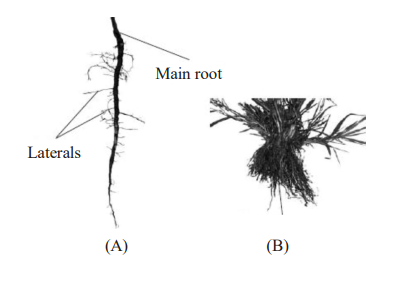NEET Exam > NEET Tests > Test: The Root (NCERT) - NEET MCQ
Test: The Root (NCERT) - NEET MCQ
Test Description
10 Questions MCQ Test - Test: The Root (NCERT)
Test: The Root (NCERT) for NEET 2025 is part of NEET preparation. The Test: The Root (NCERT) questions and answers have been prepared
according to the NEET exam syllabus.The Test: The Root (NCERT) MCQs are made for NEET 2025 Exam.
Find important definitions, questions, notes, meanings, examples, exercises, MCQs and online tests for Test: The Root (NCERT) below.
Solutions of Test: The Root (NCERT) questions in English are available as part of our course for NEET & Test: The Root (NCERT) solutions in
Hindi for NEET course.
Download more important topics, notes, lectures and mock test series for NEET Exam by signing up for free. Attempt Test: The Root (NCERT) | 10 questions in 10 minutes | Mock test for NEET preparation | Free important questions MCQ to study for NEET Exam | Download free PDF with solutions
Test: The Root (NCERT) - Question 1
The given figure (A, B, and C) shows different types of roots. Identify the root which is seen in wheat plant and originate from the base of the stem?


Detailed Solution for Test: The Root (NCERT) - Question 1
Test: The Root (NCERT) - Question 2
Which of the following is characteristic of the tap root system?
Detailed Solution for Test: The Root (NCERT) - Question 2
Test: The Root (NCERT) - Question 3
Which region of the root is responsible for the growth in length?
Detailed Solution for Test: The Root (NCERT) - Question 3
Test: The Root (NCERT) - Question 4
Which of the following plants is most likely to exhibit adventitious roots?
Detailed Solution for Test: The Root (NCERT) - Question 4
Detailed Solution for Test: The Root (NCERT) - Question 5
Test: The Root (NCERT) - Question 6
In a longitudinal section of a root, starting from the tip upward, the four zones occur in the following order:
Detailed Solution for Test: The Root (NCERT) - Question 6
Detailed Solution for Test: The Root (NCERT) - Question 7
Test: The Root (NCERT) - Question 8
In which type of plants is the fibrous root system commonly found?
Detailed Solution for Test: The Root (NCERT) - Question 8
Test: The Root (NCERT) - Question 9
Which statement is incorrect about the primary root in monocotyledonous plants?
Detailed Solution for Test: The Root (NCERT) - Question 9
Detailed Solution for Test: The Root (NCERT) - Question 10
Information about Test: The Root (NCERT) Page
In this test you can find the Exam questions for Test: The Root (NCERT) solved & explained in the simplest way possible.
Besides giving Questions and answers for Test: The Root (NCERT), EduRev gives you an ample number of Online tests for practice
Download as PDF



















